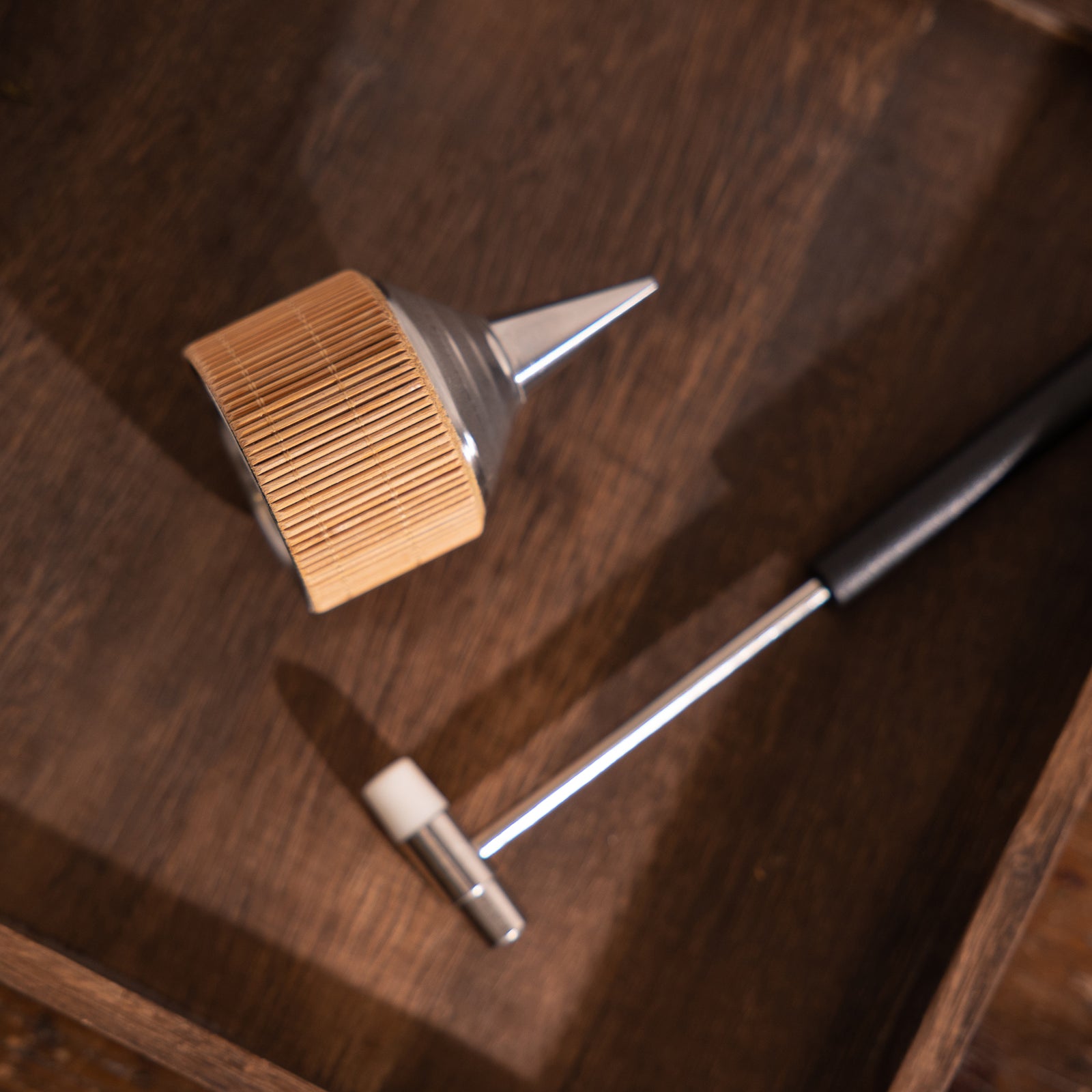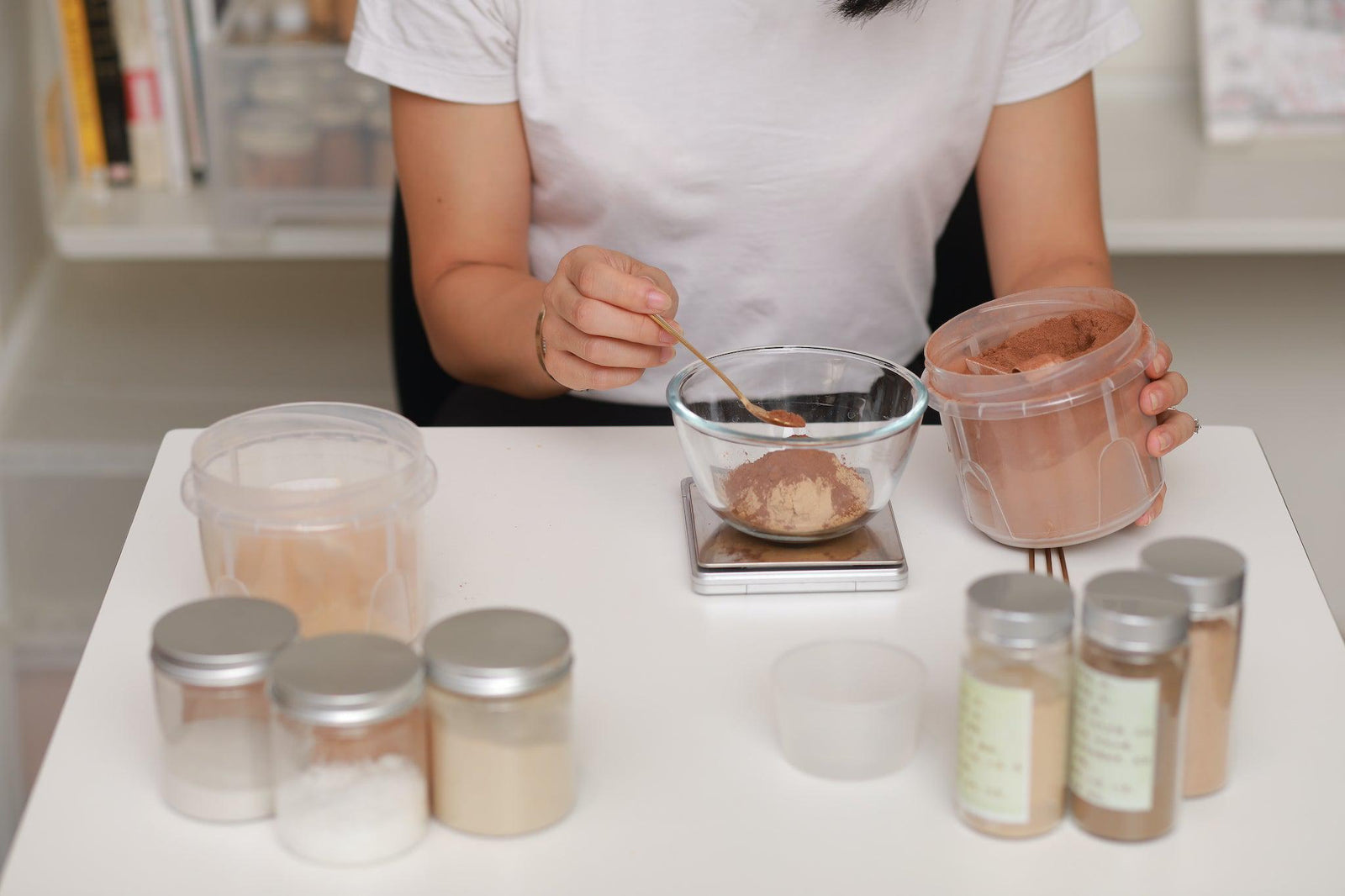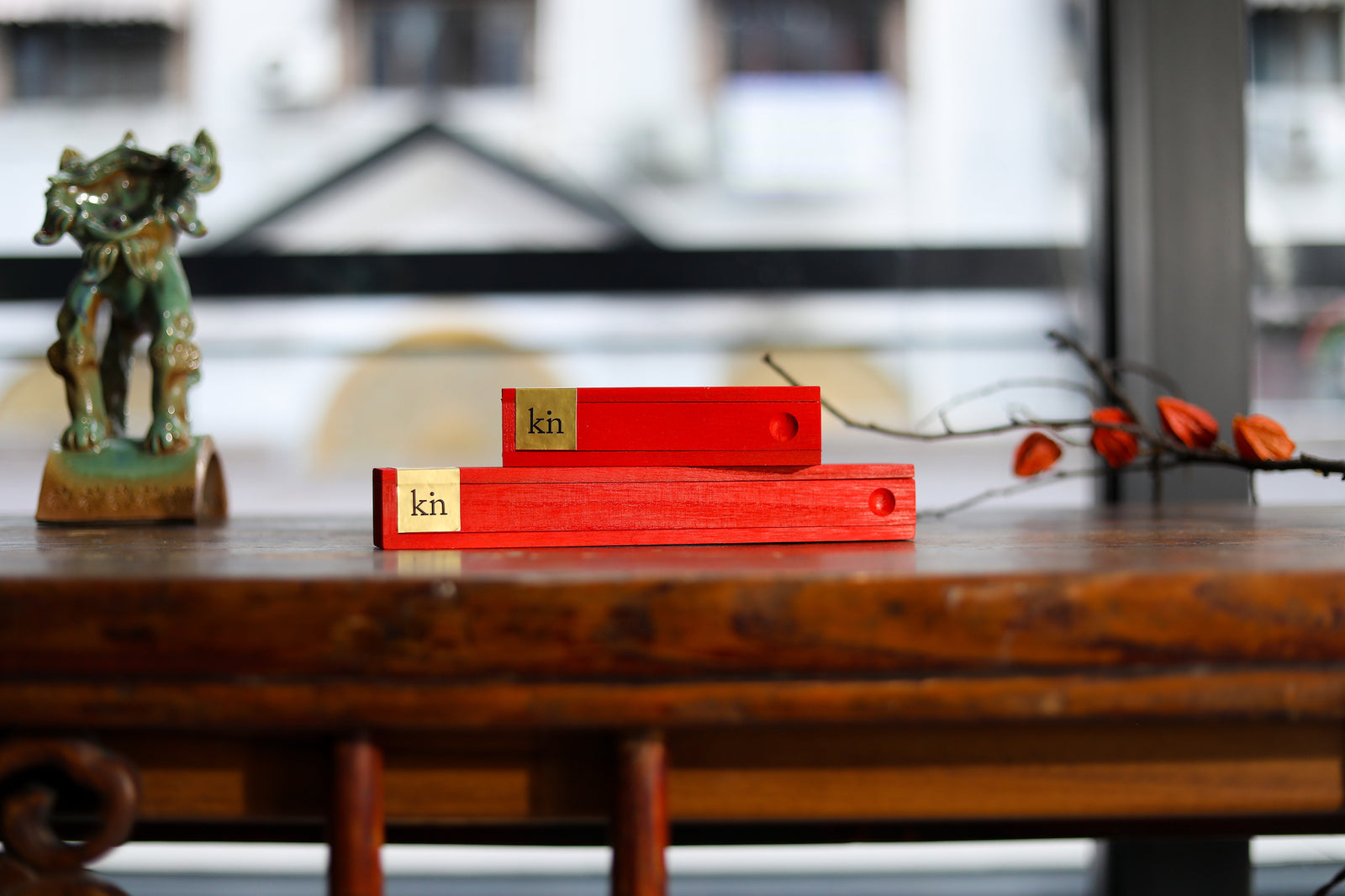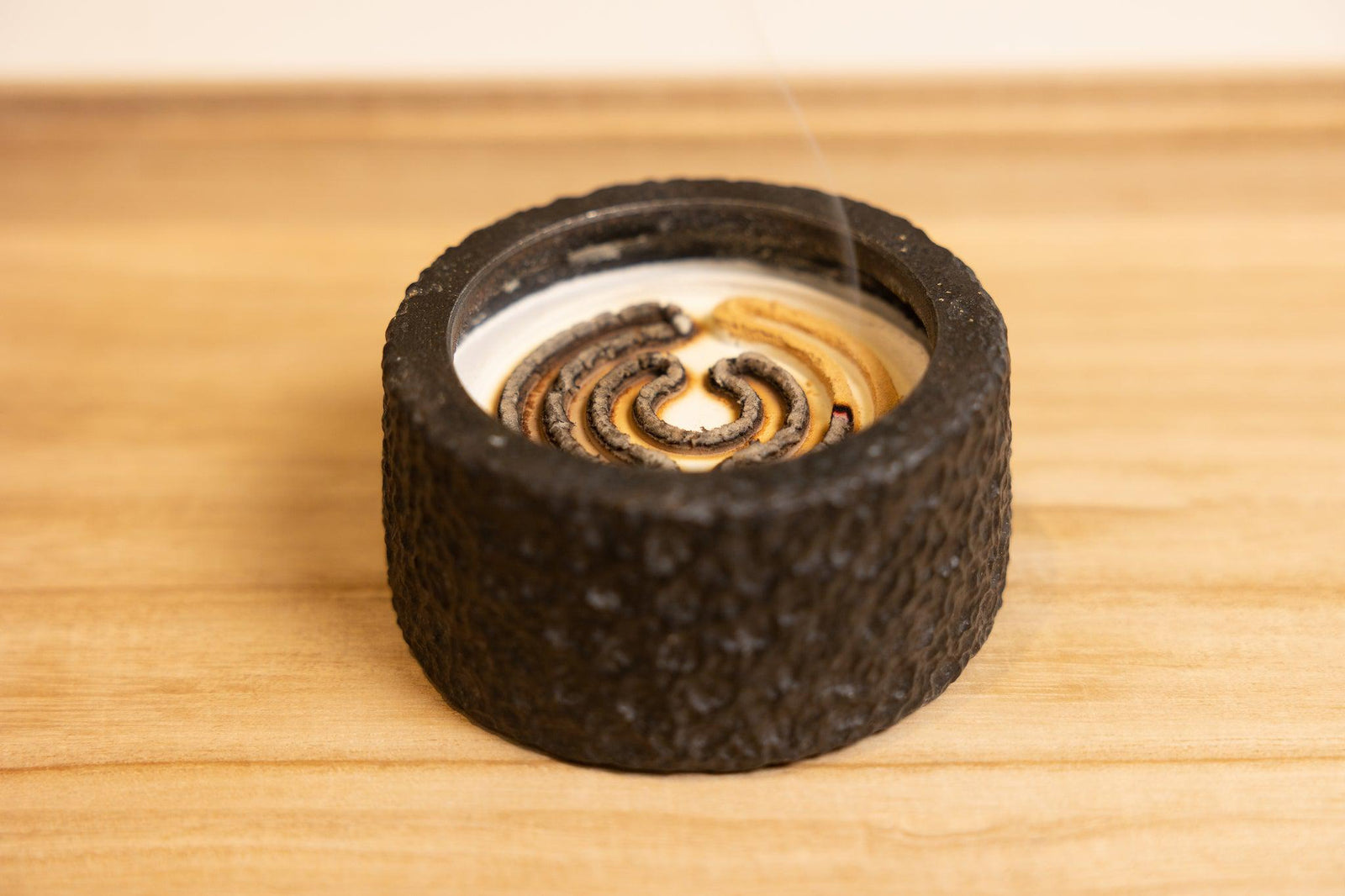The art of incense blending has thousands of years of history in China. The first known Chinese incense recipes book, called Blended Incense Recipes 《和香方》, was written approximately 2,500 years ago. Over the subsequent centuries, countless recipes were developed and recorded. We have written fairly comprehensively about the art of hand making natural incense sticks previously, so this article will focus on the ingredients and formula of the incense.
As Chinese incense use evolved and became ever more sophisticated, it was introduced to Japan along with Buddhism in the 6th century (Tang dynasty). Through the Song dynasty (10th-13th centuries) and beyond, incense was widely used in both countries, and recipes continued to flow across the ocean from China to Japan. The foundations of Japanese incense (and of other East Asian countries such as Korea and Vietnam) therefore lies in Chinese incense. And when we refer to traditional formulas below, we refer to the collective foundations of all these East Asian incense.
Where do traditional Chinese (and Japanese) incense recipes come from?
As incense was an integral part of ancient Chinese aristocratic and religious life, incense blends were developed in a multitude of ways. There were blends created by various ladies of the palace, literati and mandarins, traditional medicine practitioners, Buddhist institutions, and also incense houses that that kept their own secretive book of recipes.
In the Ming dynasty, approximately 400 years ago, the canonical Chinese incense book was writte: History of Incense or 《香乘》(pronounced Xiang Sheng, "shi-ang sheng").
The author 周嘉胄 (Zhou Wei-Zhou, "cho wei-cho") - a renowned intellectual of the time - spent over 20 years researching and compiling the book. History of Incense is a comprehensive guide of everything related to incense, including details of many incense ingredients, their uses, recipes and blends, and importantly many Chinese historical anecdotes and stories related to incense. It includes ancient incense recipes from palaces, temples, and various incense houses.
As official recognition of its importance, an edited copy of this book was compiled into the Imperial encyclopedia Complete Library in Four Branches of Literature《四库全书》in the 18th century. Of the 7 copies which were commissioned as part of the encyclopedia, 4 copies survive today, along with another edited version that was taken to Japan and preserved in the Japanese Waseda University Library (see image below).

History of Incense offers such an exhaustive insight into incense that it is still considered the “bible” for Chinese incense and incense crafts today. We are also avid students of the book, and its classic recipes form the basis for several products from the Kin Premium Incense Collection.
Traditional Chinese (and Japanese) incense ingredient types
Traditional Chinese and Japanese incense are made from all natural dry ingredients, which belong to the following four main categories:
- Woods – eg, sandalwood, Chinese cedar, nanmu (see below section)
- Flowers – eg, rose, osmanthus
- Herbs - eg, rhubarb, citronella
- Resins – eg, frankincense, benzoin
There are a small number of other types of ingredients, such dry animal parts (eg, musk, shells), or dry fruit parts (eg, citrus peel), but these are relatively few in numbers compared to the above categories.
The main ingredients used in Chinese incense through history article has more detailed descriptions of some of the principal Chinese incense ingredients, for those of you interested in this topic.

The stick incense and cone incense that we commonly use is a flammable type of incense, as it needs to burn to release the scent. As a general rule, incense for burning should be made primarily from wood-based ingredients. These have the most optimal balance of oil content (for scent) and flammability. Charcoal is not part of these traditional incense recipes.
Just a quick note here: aloeswood (also known as agarwood, jinko/jinkoh, oud/oudh) is a tricky ingredient to classify. Under many circumstances it acts like a wood-based powder, but high grade aloeswood contains substantial oil/resin, so it can take on the characteristics of resin and be difficult to burn.
What size should the ground incense powders be?
A note here: we like to ensure that our powders can pass through an 80 mesh screen sieve (0.18mm/0.007”) at minimum, and ideally can pass through a 100 mesh (0.15mm/0.0049”) screen sieve. While powders more coarse than this can still be used to make incense sticks, we've found that the clumpier pieces can affect the burning of the final stick (ie, it does not remain lit), and sometimes also results in more brittle sticks.

The incense binder - what is Makko powder and what is it made of?
In addition to the ingredient types listed above, all Chinese (or Japanese) style incense sticks also need a binder. This is a sticky substance that holds all the ingredients together into the final stick shape.
The typical binder used to make Chinese incense is something called Nanmu powder (楠木粉), or Tabu No Ki powder in Japanese. These are most commonly known as Makko powder, but we do not find this a very descriptive name, as that simply translates into "incense powder”, which could refer to other types of binders. So we mostly use the Chinese word Nanmu to describe what we use.

Nanmu powder or Tabu No Ki powder is a wood based powder made from the Machilus thunbergii, also known as red Manchilus in Chinese, or Japanese Bay tree in English. The powdered wood turns into a slippery, adhesive glue when it becomes wet. Usually it has a light smell when it is in powder form, but the smell recedes significantly a couple of weeks after the incense dries, minimally affecting the intended fragrance of the final incense.
Traditional Chinese recipes actually call for the use of Elm bark powder, known as Yu bark powder (榆木粉/榆树皮粉). Unfortunately, the most desirable type of Elm bark powder for incense binding purposes is a pale colored powder, and this type of powder can be imitated by cheaper wood powders. So in recent year, the overall quality of Elm bark powders available on the market has deteriorated due to the mixing in of “fake” powders. We therefore prefer to use Nanmu powder, as this is a naturally darker wood powder which is difficult to fake, and the quality is much more stable.
The use of a wood-based binder (vs Xanthan gum, or gum Arabica) is particularly helpful for beginners. Wood helps with the burning process, as opposed to gum, which hinders the process at certain quantities.
The percentage of binder used in an incense recipe ranges between 10-30% depending on the quality of the powder, and the types of other ingredients in the blend.
Incense recipe to make incense sticks – a sample structure
Traditional Chinese incense are considered a part of a holistic health ritual, so their blend follow a similar structure as Traditional Chinese Medicine. We have simplified this to create the basic recipe structure below. The exact proportions can be tweaked and experimented with from here:
- 60% base powder/s
- 10% Secondary powder/s (to give the incense its distinctive scent/s)
- 5% Enhancing or fixative powder/s (to stabilize and enhance the incense)
- 25% Nanmu or Tabu No Ki powder (to bind the ingredients together)
A mixture of ingredients can be used for any of the categories above, so this simple structure can in fact also become quite sophisticated.
It really pays to start simple, and when in doubt, refer to the tips and tricks below.


Incense blends: a few tips and tricks for your own recipes
If you're new to making incense, these might be helpful for you:
- Start simple – use one ingredient for each of the categories
- Australian sandalwood makes a good default base powder
- Some type of herb or flower can be a secondary powder. These can be common ingredients in your food/tea cabinet, like rosemary, mint, lavender
- An affordable aloeswood makes a good enhancer
- Remember that incense sticks need to be flammable, so popular resins like frankincense or myrrh will inhibit flammability if they are added in significant quantities
- As a break away from traditional methods, secondary powders can be substituted with essential oils. Please make sure you increase the amount of base powder/s to account for this change so the overall proportions are not disturbed
- The smell of stick incense will evolve over time much like wine. It's sometimes worthwhile to go back to a formula you didn’t particularly like after a few weeks to smell it again

The principles and recipes share here can also be used as a foundation for making either standard incense cones or backflow cones (which releases downward flowing smoke). If you are interested in making these, please refer to this article.
Have you tried blending your own diy incense? Please leave a comment below if you have any thoughts or questions.






Miranda Yen
October 17, 2024
Hi there, Regarding your two questions:
1. Yes.. moldy happens, and it happens more on incense cones than incense sticks, because the larger volume and smaller surface area keeps the moisture for longer. I have not heard of lavender powder causing molding… but maybe this particular mixture with the lavender powder is particularly slow drying. I would suggest you try a couple of things to identify whether it really is this powder – one, make stick incense with the same formula, does this mold? two, try to make the mixture without this single powder, does this mold? These types of experiments help you to isolate the problem.
2. Yes this also happens.. it could well be the tabu no ki, it is made from plant matter so every batch is different. But more often than not when this happens to me, it is because of the weather. How long a formula takes to dry and how well it burns in summer is quite different to winter, and in sunny/dry whether incense will dry easily and burn well compared to wet, humid days. You can try to make a batch with the new tabu no ki and gently heat the batch, either by placing in a very sunny area, or close by a heater, or some other gentle heating source. See if this helps. If not, maybe it’s the tabu no ki. Hope this helps! Miranda